Painters: Anon to Cohen |
||
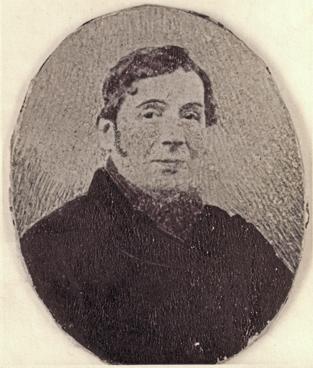 |
||
Jas Ashley [fl 1850] Nothing, or perhaps next to nothing, is known of Jas Ashley. The Dictionary of British Art Volume IV, Victorian painters, mentions ‘Ashley, J fl 1858-1870. Birmingham painter of domestic subject. Exhib one picture at RA in 1867—“Knuckle down”.’ Given the short period the entry covers it is possible, though unlikely, that it is the same person. Birmingham is not incompatible with a London sitter given that he exhibited at the RA. |
||
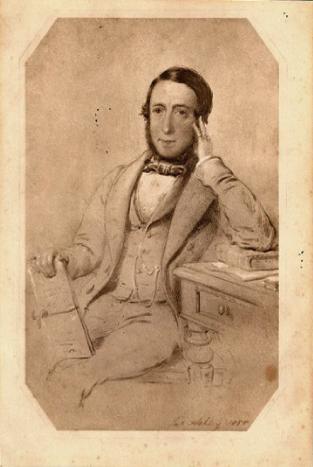 |
||||
George Woolf [1812-1851] For the sad story of these father and son portraits of George and Joseph Woolf see under Sitters S-Z. |
||||
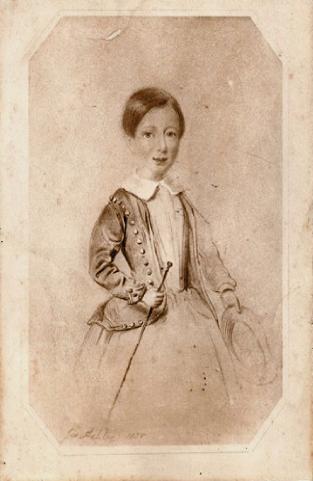 |
||||
Joseph Woolf [1844-1911] |
||||
Sir Thomas Brock [1847-1922] While it may be stretching a point to include sculpture under ‘painters’ the Jewish Chronicle for 11 May 1894 recorded that ‘Mr Thomas Brock, RA, contributes a stately and dignified bust of “Mrs Myer Salaman”, well-modelled. As will be seen, the Jewish artists hold their own with difficulty [at the Royal Academy]. There are several well-known names absent, and but few new ones to take their place’. A year or two before this Thomas Brock was going through a hard time and, in an unpublished biography, his son Frederick wrote: One name associated with this period of trial and difficulty must not be forgotten: it is that of Meyer [sic] Salaman, the head of the old established city firm which bears his name. He happened one day to call at the studio to speak to Brock about a matter quite unconnected with his art, and in the course of conversation the sculptor told him of the bad time he was passing through. Meyer Salaman was one of the most generous and sympathetic of men. All the help he rendered that ill-fated artist Simeon Solomon will never be known. What he did in Brock’s case was characteristic of the man. He commissioned him there and then to execute a portrait bust of his wife, the only work exhibited by the sculptor in 1894. Brock never forgot that act of kindness. Brock is now perhaps best known for the Victoria Memorial in front of Buckingham Palace, for which he was commissioned in 1901 and given a knighthood a decade later. Another monumental work is the statue of Prince Albert in the Albert Memorial, finally unveiled in 1876, which he completed on the death of John Henry Foley, though his involvement was only recently publicised. A surviving bronze of Sarah is not dated, but is known from the above records. Those of Myer that survive are dated 1897, a year after his sudden and unexpected death. The reproduction of Sarah used here is from ‘Royal Academy Pictures’ in The Magazine of Art supplement for 1894. It is described as marble, but this seems to be a captioning error, as it is not recorded by Brock as such. They are shown here as although the bronzes survive in private collections the original full size works in plaster from which they were cast are not known, indeed until now the bronze of Myer was not known to specialists. Biographies of both Sarah and Myer can be found at Sitters S-Z. I am most grateful to John Sankey, CMG, PhD not only for supplying information about the commissioning of the bust of Sarah Salaman, but for his patience in explaining Brock’s working methods. |
||
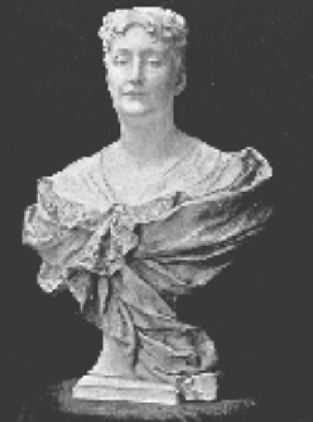 |
||||
Sarah Salaman [1844-1931] For details see above. |
||||
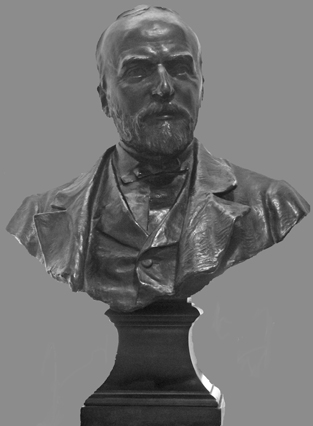 |
||||
Myer Salaman [1836-1896] For details see above. |
||||
Isaac Michael Cohen [1884-1951] Portrait painter, born Ballerat, Australia. Studied at Melbourne (travelling scholarship 1905, National Gallery of Victoria) and Paris. Royal Institute of Oil Painters 1921, Royal Society of Portrait Painters 1928. Exhibited: † Beaux Arts 1, Chenil/New Chenil Galleries 3, Glasgow Institute of Fine Art 1, International Society 1, Walker Art Gallery, Liverpool 10, Royal Society of Portrait Painters 45, Royal Academy 40, Royal Hibernian Academy 2, Royal Institute of Oil Painters 34, Royal Scottish Academy 6, Walker’s Gallery, London 96. As well as the portraits shown here, Isaac Cohen who is not related to my family, painted my father, my mother and her sister as children and many others. Not being 'missing' those family portraits are not shown here, but I find them somewhat ‘chocolate boxy’. 'Perhaps no Australian artist has attained to an assured position in London in a shorter time than Isaac Cohen. A winner of the travelling scholarship from the Melbourne National School, he has, since arriving in England, been admitted to membership of four exclusive societies—the Royal Institute of Oil Painters, the Society of Graphic Art, the Pastel Society and the Ridley Society. He is a regular exhibitor at the Royal Academy, where he has been repeatedly hung on the line, as well as at the Royal Scottish Academy and the principal provincial galleries and with the Royal Society of Portrait Painters. He also exhibited with two important societies now in abeyance—the International and the National Portrait—and, sending this year for the first time to the Paris Salon, gained the high award of a silver medal for his Portrait of a Lady. This rapid rise to recognition is due, above all, to the extraordinary accomplishment of his work, which never degenerates into mere facility. While there is nothing strikingly unconventional in it, neither is there anything trite or stereotyped. While he possesses to an unusual degree the gift of graceful portrayal of feminine types and of children, he is too sincere and thorough an artist to degenerate into the mere fashionable portrait painter. This gift is seen at its happiest in the Portrait of a Lady, which attracted attention in the Royal Portrait Society's Exhibition this year, and later in the Paris Salon. That the achievement of grace and charm does not, however, imply any lack of power is shown by portraits like ‘Sir John Monash’, now in the National Gallery at Melbourne [and another of Sir Stafford Cripps at the NPG]. 'Cohen's mingled delicacy and strength is seen to great advantage in his pastels, with which he is making a big reputation in London. This medium, offering as it does greater scope for the expression of personality through technique, puts artistry to a severe test. Many a painter of distinction in oils sinks to the level of the commonplace as a pastellist. The portrait study, Muriel, exhibited recently with the Pastel Society, reveals an admirable control of the medium, an instinctive selectiveness in the technical method employed. It is soundly studied without being set, effective without any forcing of effect. The children’s portraits, Barbara (exhibited at the Royal Academy) and Buster (exhibited with the Group of Australian Artists in Europe this year) have the same perfect naturalness. They combine the rareness of the artist's vision with the mastery of his materials necessary for the quest of the elusive quality he sets forth to capture and transcribe.' Source: ‘The work of Isaac Cohen’ by Edith M Fry, Art in Australia, 12, 10, 1924. |
||
Sir (Barnett) Lionel Abrahams, KCB [1898-1918] Isaac Cohen seems to have cut a swathe through middle class Jewry in the early 20th century. The only representation I have seen of this portrait is in the Transactions and Miscellanies of The Jewish Historical Society of England, vol 9, 1922, following his death. The volume was dedicated to him as a past President. |
||||
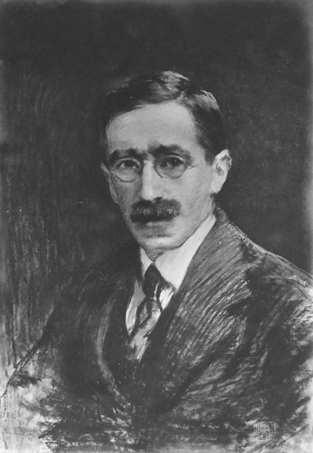 |
||||
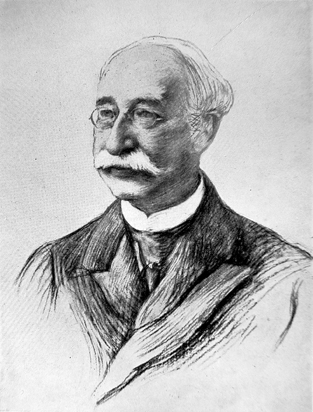 |
||||
Nathan Solomon Joseph, FRIBA [1834-1909] This portrait hung in the offices of Josephs, but seems to have got lost at some stage, not being in their current office. The only representation I have seen is in A century of social service, 1859-1959: the Jewish Board of Guardians (1959) |
||||
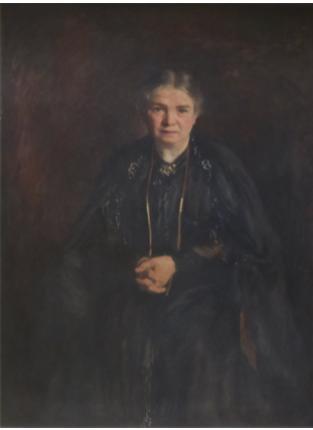 |
||||
Sarah Joseph [née Edwards, 1846-1936] 125 x 92 cm. Private collection. The wife of Lazarus Joseph, above. Probably painted about 1914, just after his death. I last saw it at the house of one of her daughters at Steyning about 1980—until that is November 2011 when I ran it to ground so will add it to the Found! page of the site. |
||||
Ruth Collet [née Salaman, 1909-2011] One of the artistic Salaman family, she was an artist in water-colour, mixed media, oils and linocut. She was born 15 June 1909 and went to Bedales School after her mother’s death from cancer, and then studied art at the Slade where she (and my mother) studied under Henry Tonks and later with Kathleen Brown and Marion Kratochvil. She had solo shows at the Goupil Gallery, Gainsborough House, Suffolk, the Ben Uri (twice), English Speaking Gallery, Oxford, the Annexe Gallery, Wimbledon, George Large Gallery, Redbourn, Sue Rankin Gallery, London and in mixed exhibitions. She was a member of the ‘East London Group’, about which a book is due to be published during 2011. Her portrait was painted by Edna Clark-Hall, another member of that earlier Slade cohort, and she died on 15 June 2001. She was married to the musician Robert Collet. You can find out more about her in the book written by her daughter, Jane Miller, Relations. |
||
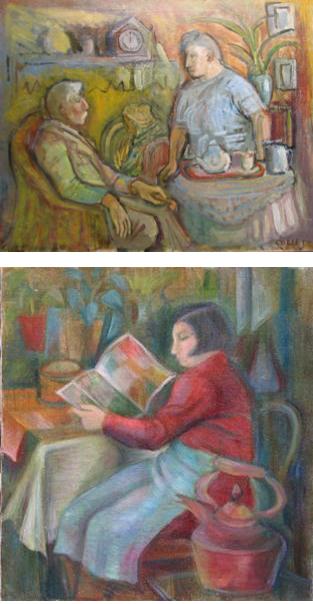 |
||||
The two paintings shown here are not actually missing, but fell into the related category of portraits of unknown sitters, though I was recently told that the couple were a Mr & Mrs Pegg and the latter was Ruth Collet’s cleaner in Highate in the 1930s. The group subject measures 20 x 25 ins [51 x 63.5 cms], while that of the woman seated reading is 23.2 x 21.2 ins [59 x 54 cm], probably an East London subject from the late 1930s or early to mid 1940s, though neither painting is dated. Both are oil on canvas. Private collection. |
||||
John Scarlett Davis [1804-1845] A British painter in watercolors and oils. Born in Leominster, Herefordshire, Davis trained at the Royal Academy and exhibited in London. After 1830, he spent most of his time on the continent, painting picturesque views and images of gallery interiors. |
||
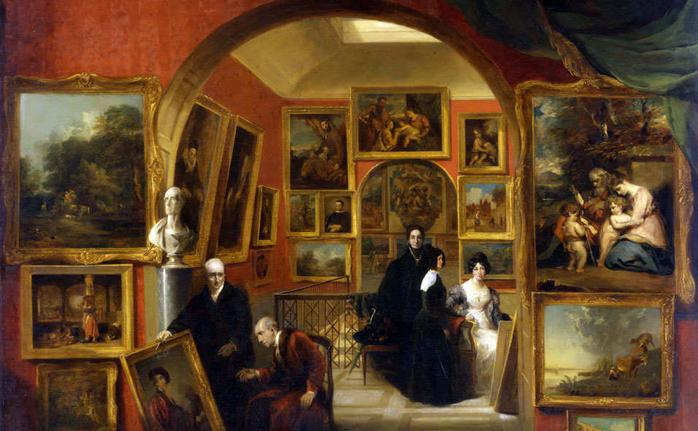 |
||
This painting, ‘Interior of the British Institution’, has an unidentified figure. For more information see the Orphan of the month. It was exhibited at the Yale Centre for British Art, in whose collection it now belongs, in 2010. A very full description of the painting and more biographical details appeared in The Connoiseur for August 1912, while the exhibition guide is here. |
||
If known the dimensions of a portrait are given in centimeters. It is reasonable to assume that most of the originals were in colour.
The illustrations come from a variety of sources, some have been photographed while still glazed and where images are taken from printed publications they may already have been cropped.
To start with I have concentrated on the biographies of the lesser known artists, but more will follow. Sources include the ALA portrait index (1906); Allgemeines Kunstlerlexikon: die bildenden Kunstler aller Zeiten und Volker (1983-90); Artists in Britain since 1945 (2006); Contemporary Artists (2002); Dictionary of Artists in Britain since 1945 (1998); Dictionary of British portraiture (1979-81); Dictionary of Victorian Painters (1978); Dictionary of British artists, 1880-1940 (1976); Dictionary of British Art Volume IV (1995); Dictionary of British Artists working 1900-1950 (1975); Dictionary of British portraiture (1979-81); Dictionaire Critique et Documentaire des Paintres, Sculpteurs, Dessinateurs et Graveurs (1999); and Who's who in art (1929 & 1996).
Anonymous
Lazarus Joseph? [1845-1914]
The photo of this painting, if indeed it is not simply a very bad photo of a photo, belonged to my grandmother and I believe it to be of her father-in-law.
It could well be by Philip Homan Miller.

